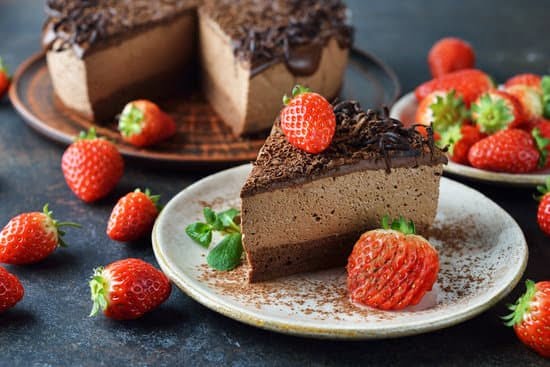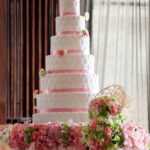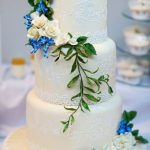Can whipped cream be used for cake decorating? The versatility of whipped cream as a cake decorating medium has been a topic of interest among baking enthusiasts. As we delve into the science behind its structure and texture, explore the pros and cons of using whipped cream for cake decorating, and discover tips, tricks, and creative ways to decorate cakes with this delightful ingredient, we’ll uncover the potential it holds in elevating the art of cake decoration.
Whipped cream is not only delicious but also possesses a light and airy texture that can add a delicate touch to any cake design. Understanding the science behind whipped cream is essential in utilizing it effectively as a cake decorating medium. From there, we can examine the various ways in which whipped cream can be used to enhance the visual appeal of cakes, along with best practices for storing whipped cream decorated cakes.
Throughout this article, we will explore real-life examples of stunning whipped cream decorated cakes that showcase the creativity and artistry that can be achieved with this versatile ingredient. By the end of our exploration, you will gain a newfound appreciation for the potential of whipped cream in transforming ordinary cakes into extraordinary works of edible art. So, let’s embark on this journey to uncover the endless possibilities that whipped cream brings to the world of cake decorating.
The Science Behind Whipped Cream
Whipped cream is a versatile and delicious medium for cake decorating, but before delving into its practical applications, it’s essential to understand the science behind whipped cream. At its core, whipped cream is a colloid, a type of mixture where one substance is dispersed and suspended evenly throughout another. In the case of whipped cream, tiny air bubbles are dispersed within the liquid fat and water content of the cream.
Structure of Whipped Cream
The process of whipping heavy cream introduces air into the liquid, causing the fat globules to become surrounded by a network of proteins. This protein network traps the air bubbles, giving whipped cream its light and airy texture. The fat in the cream also helps stabilize the structure by coating the air bubbles and preventing them from coalescing too quickly.
Texture of Whipped Cream
The texture of whipped cream depends on several factors, such as how much air is incorporated during whipping and the fat content of the cream. Higher fat content leads to a more stable foam with better volume and stability. Over-whipping can cause the fat to separate from the protein structure, resulting in a grainy or buttery texture rather than smooth and creamy.
Understanding these aspects of whipped cream is crucial when using it for cake decorating purposes because it affects not only the visual appearance but also the overall taste and feel of the finished product. With this knowledge in hand, bakers can make informed decisions about when and how to use whipped cream for decorating their cakes.
Pros and Cons of Using Whipped Cream for Cake Decorating
Pros of Using Whipped Cream for Cake Decorating
Using whipped cream for cake decorating has several advantages. Firstly, whipped cream has a light and fluffy texture that adds a delicate and airy feel to the cake. This makes it a perfect choice for creating elegant and soft designs, such as rosettes or swirls. Additionally, whipped cream can be easily flavored with different extracts, such as vanilla or almond, allowing for endless customizations to match the flavor of the cake.
Another benefit of using whipped cream is its ability to be easily tinted with food coloring. This allows for a wide range of color choices to match any theme or occasion. Whipped cream also has a smooth and creamy consistency that makes it ideal for spreading and smoothing over cakes, creating a flawless canvas for decorating.
Cons of Using Whipped Cream for Cake Decorating
Despite its versatility, there are some drawbacks to using whipped cream for cake decorating. One major concern is the stability of whipped cream in warmer temperatures. Whipped cream tends to lose its shape and structure when exposed to heat, making it unsuitable for outdoor events or warm climates. Additionally, due to its perishable nature, cakes decorated with whipped cream must be refrigerated until serving, which may limit shelf-life and convenience.
Furthermore, whipped cream may not hold intricate designs as well as other types of frosting or icing. Delicate details and intricate piping may require more skill and finesse when using whipped cream compared to firmer buttercream or fondant. It is important to consider these limitations when deciding whether to use whipped cream for cake decorating.
Tips and Tricks for Using Whipped Cream as a Cake Decorating Medium
Whipped cream can be a versatile and delicious medium for cake decorating. However, it requires some special tips and tricks to ensure that it is used effectively. One important thing to keep in mind when using whipped cream for cake decorating is its stability. Whipped cream tends to lose its shape and texture quickly, so it’s essential to use stabilized whipped cream or add stabilizers like gelatin or cornstarch to maintain its structure.
Another tip for using whipped cream as a cake decorating medium is to make sure that the cake is completely cooled before applying the whipped cream. This helps prevent the whipped cream from melting and losing its form. Additionally, chilling your mixing bowl and beaters before whipping the cream can help it achieve the desired consistency more easily.
It’s also crucial to handle whipped cream delicately when using it for cake decorating. Overmixing or rough handling can cause the whipped cream to become too dense or stiff, making it challenging to spread evenly on the cake. By gently folding in any flavorings or colors and using a light hand when spreading the whipped cream on the cake, you can achieve a smooth and even finish.
| Tips for Using Whipped Cream | Tricks for Using Whipped Cream |
|---|---|
| Use stabilized whipped cream | Cool the cake before applying |
| Chill mixing tools before whipping | Gently fold in flavors/colors |
Creative Ways to Decorate Cakes With Whipped Cream
Whipped cream is a versatile and delicious medium for cake decorating, offering a light and airy texture that can enhance the overall aesthetic of a cake. Whether you are a professional baker or an at-home enthusiast, using whipped cream for cake decorating can add a touch of elegance and sophistication to your creations. Here are some creative ways to use whipped cream when decorating cakes:
- Piping Designs: Whipped cream can be easily piped into various designs, such as rosettes, swirls, or borders, using different piping tips to create intricate patterns and textures on the cake surface.
- Fresh Fruit Garnishes: Pairing whipped cream with fresh fruit garnishes not only adds a pop of color but also elevates the flavor profile of the cake. Berries, sliced kiwi, and mandarin oranges can be arranged on top of the whipped cream for a visually appealing presentation.
- Chocolate Shavings: Sprinkling chocolate shavings over the whipped cream creates a sophisticated and elegant look that is sure to impress. This simple yet effective decoration adds depth and contrast to the cake’s appearance.
These creative techniques showcase just a few of the many possibilities when it comes to decorating cakes with whipped cream. Whether you opt for simple and elegant designs or go all out with intricate patterns and decorations, whipped cream offers endless opportunities for creativity in cake decorating.
When using whipped cream for cake decorating, it is essential to consider factors such as stability, temperature control, and proper handling techniques. By mastering these tips and tricks, you can achieve professional-looking results that will leave everyone amazed at your skill and creativity.
In the next section, we will delve into best practices for storing cakes decorated with whipped cream to ensure their longevity and quality over time.
Best Practices for Storing Whipped Cream Decorated Cakes
Storing a whipped cream decorated cake properly is essential to maintain its texture and appearance. Here are some best practices for storing whipped cream decorated cakes:
1. Keep it Cool: Whipped cream has a tendency to melt in warm temperatures, so it’s important to store the cake in a cool environment. If possible, place the cake in the refrigerator to keep the whipped cream firm.
2. Avoid Direct Sunlight: Sunlight can cause the whipped cream to melt and lose its shape, so be sure to store the cake away from direct sunlight.
3. Use an Airtight Container: To prevent the whipped cream from absorbing any odors or flavors from the refrigerator, store the cake in an airtight container. This will also help protect the cake from drying out.
It is essential to note that whipped cream-based decorations are best used on desserts that will be served immediately. However, if you need to store a cake decorated with whipped cream, following these best practices can help preserve its appearance and texture.
Remember that using proper storage techniques will help maintain the beauty and taste of your whipped cream decorated cake for as long as possible.
Real-Life Examples of Stunning Whipped Cream Decorated Cakes
Whipped cream is a versatile and delicious medium for cake decorating, and there are countless stunning examples of cakes adorned with this light and fluffy topping. From simple designs to intricate creations, whipped cream can be used to adorn cakes for any occasion, from birthdays to weddings.
One popular example of a whipped cream decorated cake is the classic strawberry shortcake. Layers of sponge cake are filled with sweetened whipped cream and fresh strawberries, then topped with more whipped cream and strawberries for a beautiful and delicious dessert. This simple yet elegant design showcases the versatility of whipped cream in cake decorating.
Another stunning example is the black forest cake, which features layers of chocolate sponge cake filled with cherries and whipped cream. The exterior of the cake is coated in more whipped cream and adorned with chocolate shavings and maraschino cherries. This decadent dessert not only highlights the beauty of whipped cream as a decorating medium but also its ability to complement rich flavors.
A more modern take on using whipped cream for cake decorating is the trend of “naked” or “semi-naked” cakes. These minimalist designs feature thinly spread layers of whipped cream on the exterior of the cake, allowing the layers and fillings to peek through. Fresh flowers, fruits, or edible gold leaf can be added as accents, resulting in a stunning yet understated presentation.
| Example | Description |
|---|---|
| Strawberry Shortcake | Layers of sponge cake with sweetened whipped cream and fresh strawberries |
| Black Forest Cake | Chocolate sponge cake filled with cherries and whipped cream, coated in more whipped cream and chocolate shavings |
| Naked Cake | Minimalist design featuring thinly spread whipped cream on the exterior, allowing layers and fillings to show through |
These real-life examples showcase just some of the many ways that whipped cream can be used for stunning cake decorations. Whether you prefer classic designs or more modern approaches, there’s no denying that whipped cream offers endless possibilities for creating beautiful and delicious cakes.
Conclusion
In conclusion, it is evident that whipped cream can indeed be used for cake decorating. Its light and airy texture, combined with its ability to hold intricate designs, make it a versatile and popular choice for professional bakers and home decorators alike. While there are some limitations to using whipped cream for cake decorating, such as its stability in warmer temperatures, the pros far outweigh the cons when it comes to creating stunning and delicious confections.
One of the key benefits of using whipped cream for cake decorating is its natural flavor and ability to complement a wide variety of cake flavors. Unlike buttercream or fondant, whipped cream offers a fresh and light taste that many find appealing. Additionally, with proper techniques and tips for stabilizing whipped cream, decorators can achieve beautiful designs that add a touch of elegance to any dessert.
Furthermore, as evidenced by the real-life examples provided in this article, there are numerous creative ways to incorporate whipped cream into cake decorating. From simple rosettes and borders to more elaborate piping techniques and sculpted shapes, the possibilities are endless.
With the right skills and imagination, whipped cream can elevate the visual appeal of cakes and truly make them stand out. In light of these points, embracing the potential of whipped cream in cake decorating opens up a world of artistic possibilities for bakers everywhere.
Frequently Asked Questions
Can You Decorate a Cake With Whipped Cream?
Yes, you can definitely decorate a cake with whipped cream. It is a popular choice for frosting and decorating cakes, especially for those who prefer a lighter and less sweet option compared to buttercream.
How Long Will Whipped Cream Last on a Cake?
Whipped cream will typically last on a cake for about 1-2 days if stored in the refrigerator. However, it is important to keep in mind that whipped cream can start to lose its texture and firmness over time, so it’s best to consume the cake sooner rather than later.
Will Whipped Cream Melt on a Cake?
Yes, whipped cream has a tendency to melt when exposed to heat or warm temperatures. This means that if you are decorating a cake with whipped cream, it is important to store the cake in the refrigerator until serving time.
Additionally, if the cake will be displayed outdoors or in a warm environment, it’s best to keep it chilled as much as possible to prevent melting.

Welcome to our cake decorating blog! My name is Destiny Flores, and I am the proud owner of a cake decorating business named Cake Karma. Our mission is to provide delicious, beautiful cakes for all occasions. We specialize in creating custom cakes that are tailored specifically to each customer’s individual needs and tastes.





